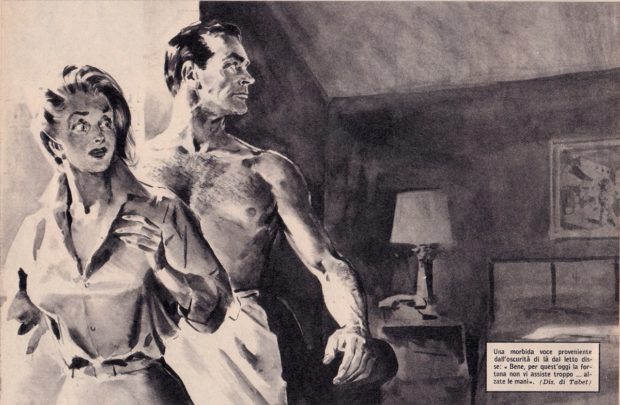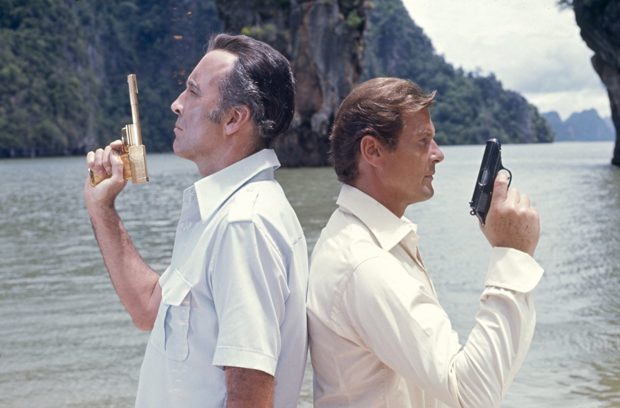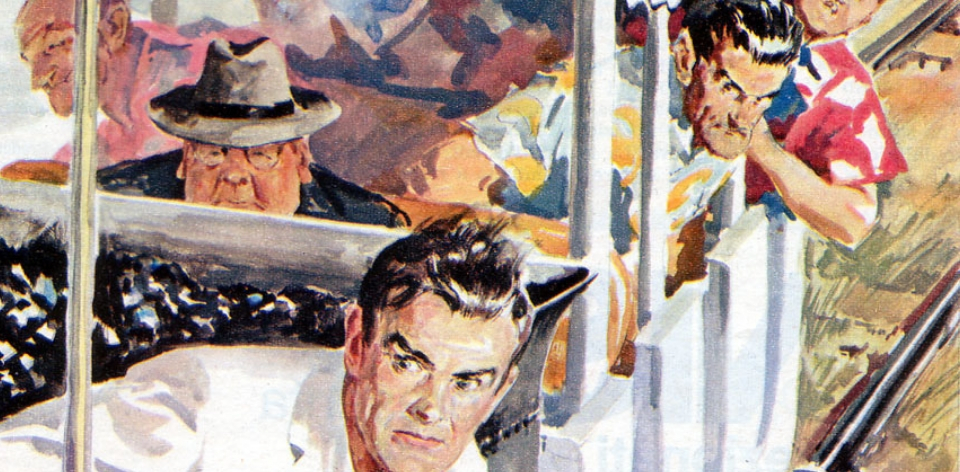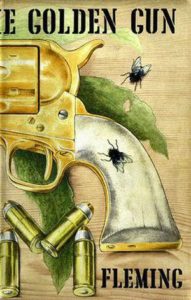Bond. James Bond. Is there a name more synonymous with spying, tuxedos, and shaken cocktails than the British secret agent? Join me as I read all of the James Bond books in 007 Case Files, encompassing Ian Fleming and beyond. For Your Eyes Only: there’s potential spoilers ahead.
“This is, alas, the last Bond and, again alas, I mean it, for I really have run out of puff and zest…” – Ian Fleming in a letter to William Plomer
When Fleming’s final full-length Bond novel was released in April 1965, the author had been dead for almost eight months. As such, THE MAN WITH THE GOLDEN GUN feels a bit like someone scraped the last of Fleming’s brain out to see if there was any Bond left, and published the results. In some ways, that’s exactly what this is: an unpolished manuscript that found its ways onto the shelves and still became a bestseller. It was the height of Bondmania, after all.
Bond’s creator, on the other hand, was not faring so well. Following a protracted legal battle over the rights to Thunderball, Fleming’s health had deteriorated to the point that he couldn’t stand more than a few hours a day at his typewriter. The lack of concentration is virtually oozing out of the resulting pages, ones that failed to contain the exacting details of a second Fleming draft. Taking place in Jamaica (and frequently referencing Doctor No), it’s almost as though Fleming couldn’t find the effort to think outside his island home and Goldeneye estate.
Picking up after the events of You Only Live Twice, a book that could have quite easily been a fitting bookend for Bond’s adventures, a man claiming to be Bond turns up at M’s office demanding an audience. While it is confirmed to be the genuine Bond, his assassination attempt on M reveals Soviet brainwashing. A quick fix later and Bond is sent back into the field to investigate Scaramanga: the eponymous killer with the titular gun. The plot becomes a basic ‘kill the bad guy, regain his 00 status’. After thirteen books, Fleming’s creation is back to being a blunt instrument.

This scarcely seems to matter given how two-dimensional Francisco “Pistols” Scaramanga is as a villain. Kingsley Amis – who later wrote the first Bond continuation novel Colonel Sun (1968) as Robert Markham – was asked by publisher Jonathan Cape to read Fleming’s first draft. He pointed out “Scaramanga’s thinness and insipidity as a character” along with the implausibility that a professional killer would hire a stranger to be his bodyguard. It’s been suggested more than once that Scaramanga is more of a henchman than a villain, although after Bond’s multi-book confrontation with Blofeld anybody would pale in comparison.
Of course, it didn’t stop Fleming from dropping in a few questionable character details about the villain. In a report read by M, it’s recorded that Scaramanga has a superfluous nipple. Then there’s this gem:
“This man cannot whistle. Now it may only be a myth, and it is certainly not medical science, but there is a popular theory that a man who cannot whistle has homosexual tendencies.”
M even tests himself by whistling a few bars. Just to be sure, you understand. (In earlier books, Bond/Fleming had also suggested that homosexuality was one of several “stubborn disabilities” that could be given “successful treatment.” Don’t get me started on Goldfinger). The suggestion, perhaps, is that Scaramanga drew Bond into his orbit due to some kind of attraction to the spy. Like most things in the book, Scaramanga’s sexuality is never developed beyond the whispers of rumour.
Which is one of the more fundamental issues with THE MAN WITH THE GOLDEN GUN. Without the levels of research and detail that typically found their way into Fleming’s later drafts, this is more a disjointed collection of ideas than it is a cohesive narrative. The most glaring of these is a plot point in which Bond removes a bullet from the chamber of Scaramanga’s gun to gain an advantage, but only pages later Scaramanga is firing it with no impediment. This type of omission is something that Bond continuation author William Boyd (Solo) also points out in his otherwise kind assessment of the novel in the introduction to the 2014 Vintage Classics edition.

The character would evolve years later with the casting of Christopher Lee in Guy Hamilton’s 1974 film adaptation. Here Scaramanga is given a dwarf henchman, a MacGuffin in the “Solex agitator,” and a high-powered energy beam for a grander sense of villainy. The stand-offs and duels between Bond (Roger Moore) and Scaramanga also leave us with some of the most quotable lines in Bond film history, as hilariously demonstrated by Rob Brydon and Steve Coogan in The Trip (2010). Lee’s literary counterpart merely manages to tie Bond’s former secretary Mary Goodnight to some railway tracks. You can hear the vintage music playing now, can’t you?
With the exception of Octopussy and The Living Daylights – containing a handful of short stories written or previously published between 1959 and 1963 – this was the end of the road for Fleming’s Bond. The ailing author tried to give Bond a send-off with a knighthood, one that the typically self-effacing (and similarly bedridden) agent declined. “I am a Scottish peasant and will always feel at home being a Scottish peasant.” Perhaps near the end of his days, Fleming was reflecting on his own roots as the grandson of the Scottish financier Robert Fleming. Either way, Fleming’s Bond ends not with a bang but a hospital bed.





